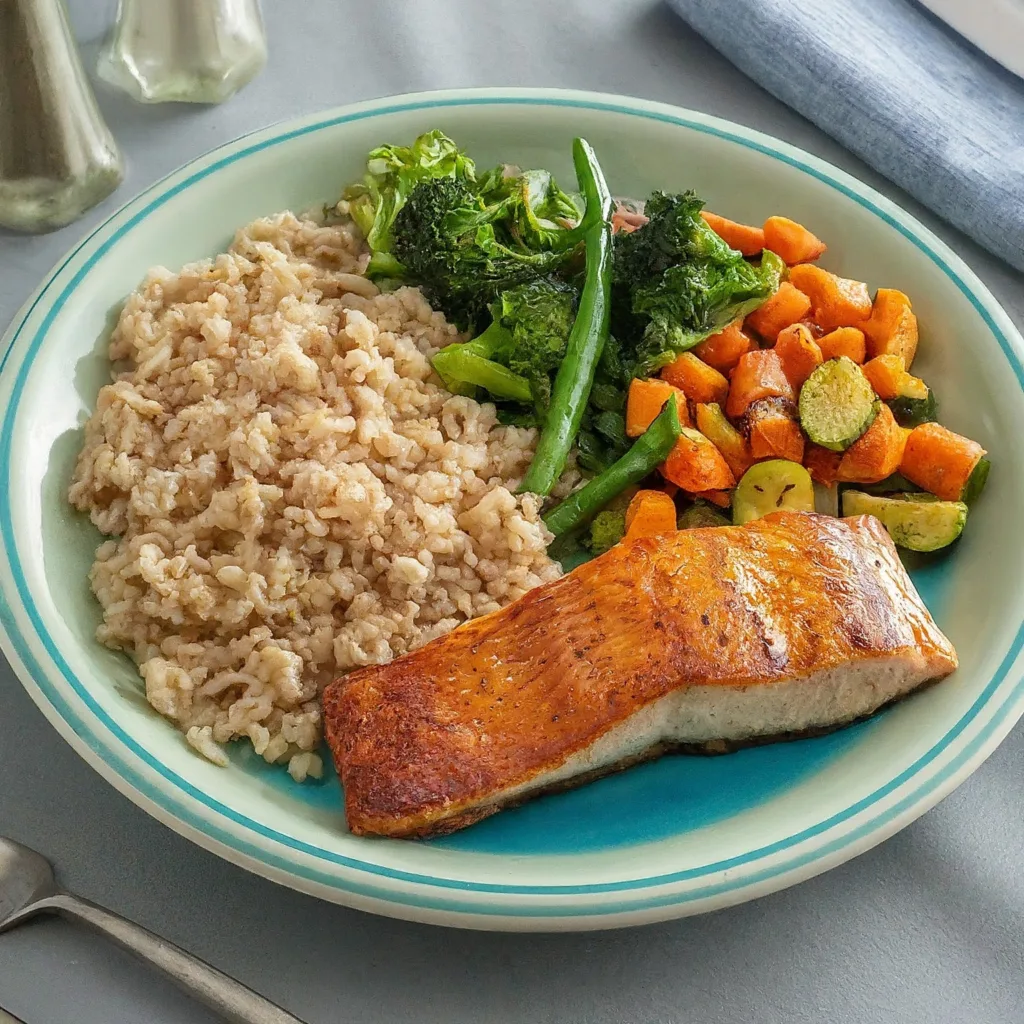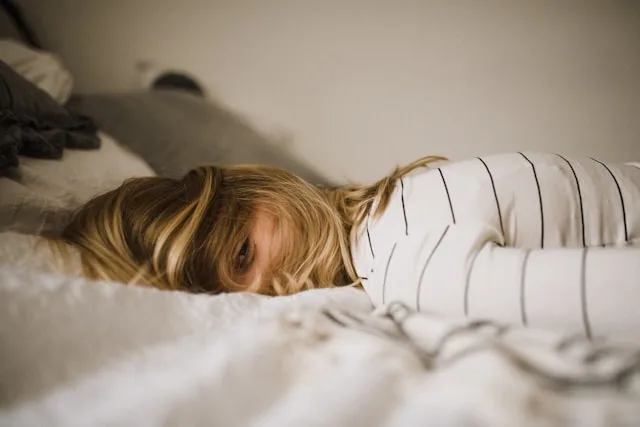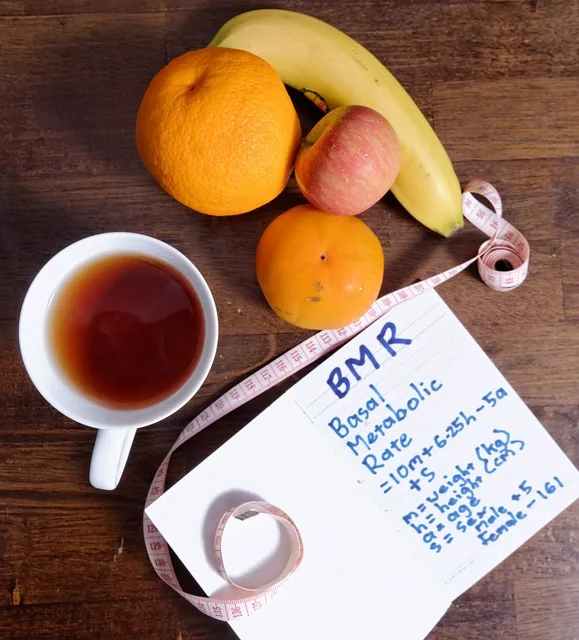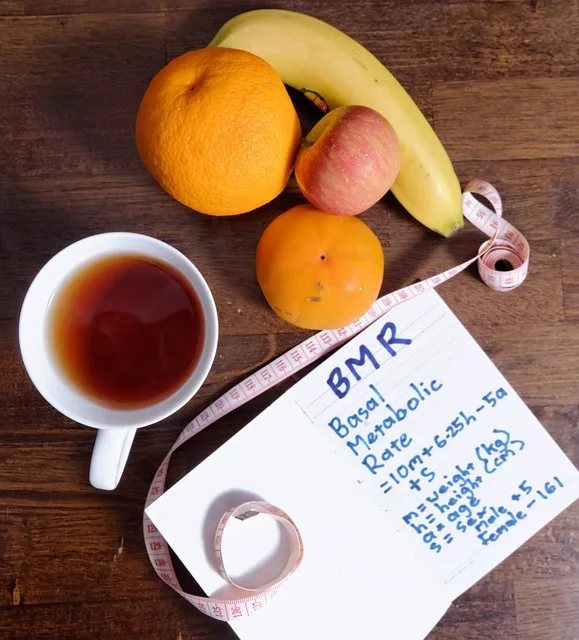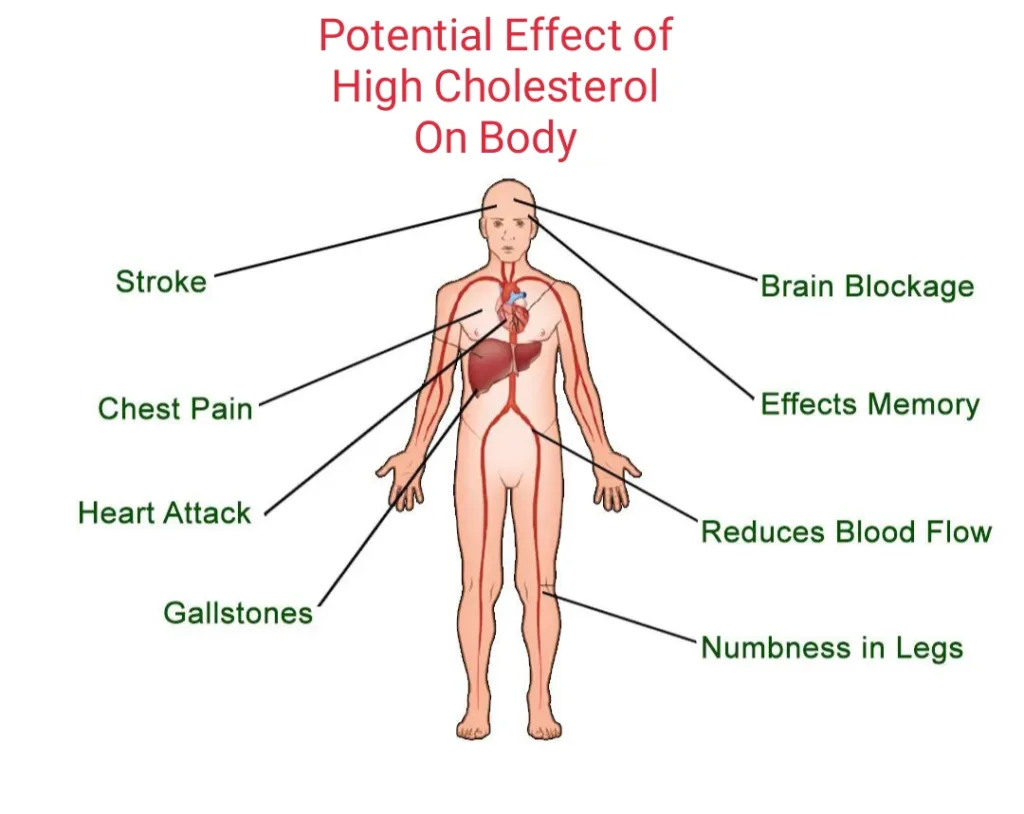Depression and anxiety are two of the most common mental health conditions affecting people all over the world.
While depression and anxiety may sound very different, for the most part, but its conditions actually share many important signs.
These conditions can significantly impact one’s quality of life, causing a range of symptoms that can make it challenging to carry out daily activities.
What is Depression?
Depression is a mental health condition characterized by persistent feelings of sadness, hopelessness, and loss of interest in activities that were once enjoyable. Individuals with depression may experience a range of physical and emotional symptoms, such as fatigue, difficulty concentrating, changes in appetite, and sleep disturbances. It can also lead to suicidal thoughts or actions, making it a serious and potentially life-threatening condition.
What is Anxiety?
Anxiety is a mental health condition that causes excessive worry or fear about everyday situations or events. Individuals with anxiety may experience a range of physical and emotional symptoms, such as rapid heartbeat, sweating, trembling, and feelings of panic or dread. Anxiety can be triggered by specific events, such as public speaking or flying, or it can be a general feeling of unease or nervousness that persists throughout the day. It can also interfere with daily life, making it difficult to carry out routine activities.
While there are various treatment options available for depression and anxiety, many people seek complementary therapies to help manage their symptoms. One such therapy that has gained popularity in recent years is yoga. Yoga is an ancient practice that combines physical postures, breathing techniques, and meditation to improve overall health and well-being.
Studies have shown that yoga can be an effective complementary therapy for managing symptoms of depression and anxiety, making it an attractive option for those seeking alternative ways to cope with these conditions. In this blog post, we will explore the symptoms and causes of depression and anxiety, and how yoga can be used to manage these conditions.
Symptoms of Depression and Anxiety
The main symptom of depression is usually a lethargic, sad or hopeless mood, whereas anxiety mainly includes extreme feelings of worry, nervousness, and fear.
For example, anxiety often includes irritability – and some people with depression may feel more irritable than sad.
As humans, we share a wide range of emotional states, including attributes of sadness, sadness, and existential distress, commonly labeled as depression, and thus considered unhealthy, Even if they are normal reactions to life events.
The same life events can also create a state of deep restlessness and anxiety, which gives us the complicating state of dysthymic disorder.
Clinical diagnosis of depression considers the severity and persistence of specific symptoms, includes:
- Sadness
- Extreme hopelessness or pessimism
- Irritability
- Loss of interest in sometimes pleasurable activities
- Thoughts of suicide
- Difficulty sleeping, Eating, or Functioning
The technical definition of depression given in the DSM-V (Diagnostic and Statistical Manual of Mental Disorders) differentiates persistent depressive disorder, a depressed mood that lasts at least 2 years, perinatal depression (also known as postpartum sadness), psychotic depression (involving some form of psychosis), and from seasonal affective disorder (Winter depression is caused by less sunlight). 1
Within each of these psychological categories is a wide range of situations and experiences.
The DSMV also distinguishes between episodic and habitual depression that can form a core part of one’s sense of self.
These conditions are often concomitant with anxiety, which can be a generalized anxiety disorder, panic disorder, or social anxiety disorder.
Although acute or chronic depression can be debilitating and lead to harmful behaviors, mild depression can be an effective coping strategy; a means of intense self-reflection that ultimately opens one up to a clearer and healthier sense of self, others, and one’s state of life; And a call for help.
When acute or chronic, depression is, well, depressing: Other important ways of living one’s life give way to self-defeating and self-destructive behavior.
Social isolation, substance abuse and neglect of self-care are typical effects.
With anxiety – also a normal part of life because we feel anxious in anticipation of something – our fears and apprehensions can easily interfere with our normal lives, distracting from our work, relationships, and sense of fulfillment.
Generalized anxiety disorder manifests as:
- Restlessness
- Mental and physical fatigue
- Irritability
- Obsessive worry
- Muscle tension
- Sleep problems
Panic disorder involves a sudden feeling of fear and feeling out of control, whereas social anxiety disorder involves a fear of social situations, especially when there is a sense of being judged.
Causes of depression and anxiety
Depression can be caused by a wide range of conditions, starting with the situations of one’s life during childhood, particularly abandonment, physical abuse, and sexual abuse.
Several life events—some of which are fewer “events” than lifelong situations—can trigger a depressive response:
- Illness
- Major life changes
- The experience of living in a sexist, racist, ageist, or otherwise discriminatory society
- Financial difficulty
- Violence
- Loss
- Social isolation
- Difficult social relationships
Drug abuse—even the simple use of certain substances and certainly the use of a wide range of FDA-approved drugs—can cause or exacerbate mood disorders.
There are also physical factors that can cause chemical imbalances in the brain that lead to emotional depression.
These same variables often cause anxiety, especially in people who are typically shy, feel vulnerable, or are exposed to stressful life events. Here are some of the common causes of depression and anxiety:
Biological Factors
- Genetics: Individuals with a family history of depression or anxiety may have a higher risk of developing these conditions.
- Chemical Imbalances: Changes in brain chemistry, such as imbalances in neurotransmitters, can contribute to the development of depression and anxiety.
Environmental Factors
- Trauma: Experiencing traumatic events, such as abuse or violence, can increase the risk of developing depression and anxiety.
- Stressful Life Events: Significant life changes, such as divorce, job loss, or the death of a loved one, can contribute to the development of depression and anxiety.
- Social Isolation: Social isolation and a lack of social support can increase the risk of developing depression and anxiety.
Psychological Factors
- Negative Thinking Patterns: Persistent negative thoughts and beliefs can contribute to the development of depression and anxiety.
- Personality Traits: Certain personality traits, such as neuroticism or low self-esteem, can increase the risk of developing depression and anxiety.
Stress is also a significant factor that can exacerbate symptoms of depression and anxiety.
Research has shown that chronic stress can impact brain function and increase the risk of developing depression and anxiety. A 2015 study published in the Journal of Clinical Psychiatry found that individuals who experienced chronic stress had higher levels of depression and anxiety symptoms. 2
Similarly, a 2022 study published in the Journal of Affective Disorders found that stress can lead to increased anxiety symptoms in individuals with generalized anxiety disorder. 3
Healing or Treatment
Most depression passes over time, especially when one is able to try to be proactive, share time with others and trust, and avoid known triggers.
When depression is persistent or other conditions such as acute anxiety or substance abuse are experienced, this may indicate the value of treatment.
The most common treatments for depression and anxiety are some form of psychotherapy, particularly cognitive behavioral therapy, and antidepressant medication, sometimes in combination.
In cases of severe chronic depression in which medications have not been effective, electroconvulsive therapy is often recommended.
Every form of therapy that appears to be variable and complementary offers something or the other to heal depression and anxiety.
Mindfulness-based meditation as a tool in cognitive therapy has gained significant traction as an effective method for reducing depression and anxiety in a wide spectrum of settings. Now, 35 years after the pioneering work of Jon Kabat-Zinn, we have anecdotal evidence of its efficacy. 4
We find increasing evidence of the efficacy of other Buddhist-based meditation practices, including Vipassana, in relieving depression and anxiety.
Benefits of Yoga for Depression and Anxiety
Yoga can be an effective complementary therapy for managing symptoms of depression and anxiety.
Research has shown that yoga can be effective in improving symptoms of depression and anxiety. A 2017 systematic review published in the Journal of Psychiatric Research found that practicing yoga was associated with significant reductions in symptoms of depression and anxiety. 5
Similarly, a 2019 meta-analysis published in the Journal of Affective Disorders found that yoga was effective in reducing symptoms of depression. 6
Here are some ways that yoga can help alleviate symptoms of these conditions:
- Stress Reduction: Yoga is known to promote relaxation and reduce stress levels. Regular practice of yoga can help to regulate the stress response and promote a sense of calm and relaxation.
- Increased Mindfulness: Mindfulness is the practice of being fully present and engaged in the present moment. Yoga can help individuals to increase mindfulness and promote greater self-awareness, which can be helpful in managing symptoms of depression and anxiety.
- Improved Mood: Regular practice of yoga can lead to improved mood and reduced symptoms of depression and anxiety. The physical postures of yoga can help to release tension and improve circulation, leading to a greater sense of well-being.
- Enhanced Self-Esteem: Practicing yoga can help individuals to build a greater sense of self-esteem and self-confidence. Yoga encourages individuals to focus on their own progress and development, rather than comparing themselves to others.
- Increased Social Support: Yoga classes can provide a supportive community for individuals with depression and anxiety. The social support that comes from participating in a group yoga class can be beneficial for managing symptoms of these conditions.
Depression and Anxiety Healing with Yoga
Many ancient to modern yoga principles and practices focus on mental health, including the Yoga Sutras by Patanjali, which sets out the basic purpose of yoga as chitta vrtti nirodha, “to calm the fluctuations of the mind.”
We find many expansions and refinements of this idea in the late 20th century and into the present, and more recent well-designed studies have found evidence of efficacy, each of which are specific yoga practices for the treatment of depression and anxiety.
The focus of yoga therapy to address depression and anxiety lies in opening up to self-acceptance while following the path of life-changing practices.
Embodiment practices of asana can help bring us into the present moment, reducing the tendency to focus on past life events or think about something that hasn’t happened yet.
Yoga asanas can be a tool to re-experience the body in a positive way, warding off negative emotions while providing a more peaceful and joyful body.
The basic idea here is that each moment in any asana is experienced as if we are opening many different windows on our tendencies in life, which let us know ourselves through the various thoughts and feelings that arise in response to the asana allows to see more clearly that instant moment.
When adding breathing exercises, starting with basic Ujjayi Breath, we can play with the ways in which the qualities of breathing influence the qualities of self-awareness.
As we breathe, we feel a more pervasive awareness, a larger and lighter space with great potential for deep personal insight. As we exhale, we become calm, calm and calm inside, especially in the natural pause that occurs when the breath is empty.
Persistence in the simple meditative practice of breath-mantras allows us to gradually release our self-limiting and self-destructive patterns of mental and emotional response to life events, even when we still expose ourselves to many triggers otherwise causes anxious or depressive episodes.
Thus, it is in the blended practices of asana, pranayama and meditation that we come across the most on the healing effects of yoga for depression and anxiety.
Incorporating yoga poses
While different types of yoga may have different poses that are particularly beneficial for individuals managing symptoms of depression and anxiety, here are a few examples of yoga poses that can be helpful:
- Child’s Pose: This pose can be grounding and calming. Start on your hands and knees, bring your big toes together and sit back onto your heels. Walk your hands forward and rest your forehead on the mat. Take deep breaths in and out through the nose.
- Cat/Cow: This gentle flow between two poses can help to release tension in the spine and can be a grounding and centering practice. Start on your hands and knees. Inhale and lift your head and tailbone, arching your back for Cow Pose. Exhale and tuck your chin to your chest, rounding your spine for Cat Pose. Repeat this flow several times.
- Downward-Facing Dog: This pose can help to stretch and lengthen the spine, while also providing an inversion that can be energizing and uplifting. Start on your hands and knees. Tuck your toes under and lift your hips up and back, coming into an upside-down “V” shape. Straighten your arms and legs and take deep breaths in and out through the nose.
- Warrior II: This pose can be empowering and energizing. Start in Mountain Pose at the top of your mat. Step your left foot back and turn your left foot out to a 90-degree angle. Bend your right knee and extend your arms out to the sides, coming into Warrior II Pose. Hold this pose for several breaths before switching sides.
- Legs Up the Wall: This pose can be calming and restorative, allowing the body to relax and release tension. Sit with one side of your body against a wall, and then swing your legs up the wall so that your body is lying on the floor with your legs straight up against the wall. Stay in this pose for several minutes, breathing deeply and allowing your body to relax.
- Bridge Pose: This pose can be energizing and uplifting, while also helping to release tension in the lower back and hips. Lie on your back with your knees bent and your feet flat on the floor. Press into your feet and lift your hips up toward the ceiling, keeping your shoulders and head on the floor. Hold for several breaths before lowering your hips back down to the floor.
- Tree Pose: This pose can help to improve balance and focus, while also promoting a sense of grounding and stability. Stand on one foot and place the sole of the other foot against your inner thigh or calf. Bring your hands to your heart center and focus on a steady point in front of you. Hold for several breaths before switching sides.
- Corpse Pose: This pose can be a deeply relaxing and restorative pose, allowing the body and mind to fully let go of tension and stress. Lie on your back with your arms at your sides and your legs straight. Close your eyes and allow your body to fully relax. Stay in this pose for several minutes, breathing deeply and allowing your body to rest.
- Cat Tail Pull: This pose can help to release tension in the hips and lower back, promoting a sense of relaxation and ease. Lie on your back and bring your knees into your chest. Wrap your arms around your knees and gently pull them toward your chest. Hold for several breaths before releasing.
- Seated Forward Fold: This pose can help to release tension in the back and hips, while also promoting a sense of calm and relaxation. Sit with your legs extended in front of you. Inhale and reach your arms up overhead, then exhale and fold forward over your legs, reaching for your toes or ankles. Hold for several breaths before releasing.
Yoga sequence
Here is a yoga sequence that can be helpful for managing symptoms of depression and anxiety:
- Sukhasana (Easy Pose): Sit cross-legged on the floor or a cushion, with your spine straight and your hands resting on your knees. Close your eyes and take several deep breaths, focusing on the sensation of the breath moving in and out of your body.
- Cat-Cow: Come onto your hands and knees, with your wrists directly under your shoulders and your knees directly under your hips. Inhale and arch your spine, dropping your belly towards the floor and lifting your head and tailbone. Exhale and round your spine, drawing your chin towards your chest and pressing your hands and knees into the floor. Continue this pattern of movement for several rounds, focusing on the sensation of the spine moving.
- Downward-Facing Dog: From hands and knees, tuck your toes under and lift your hips up and back, coming into an inverted V shape with your body. Keep your hands and feet about shoulder-width apart, and lengthen through your spine and legs. Take several deep breaths, focusing on the sensation of the breath moving in and out of your body.
- Sun Salutation A: From Downward-Facing Dog, step or hop your feet to your hands and inhale into a halfway lift, with your hands on your shins and your spine straight. Exhale and fold forward, bringing your hands to the floor or your shins. Inhale and reach your arms up overhead, coming into a gentle backbend. Exhale and bring your hands back to your heart. Repeat for several rounds, moving with the rhythm of your breath.
- Warrior II: From Tadasana (Mountain Pose), step your left foot back about three to four feet and turn your left foot out at a 90-degree angle. Bend your right knee and extend your arms out to the sides, coming into Warrior II. Keep your gaze over your right fingertips and your shoulders relaxed. Take several deep breaths, focusing on the sensation of the breath moving in and out of your body.
- Tree Pose: From Warrior II, shift your weight onto your right foot and lift your left foot off the floor. Place your left foot on your right calf or inner thigh, avoiding the knee. Bring your hands to your heart or extend them overhead. Take several deep breaths, focusing on the sensation of the breath moving in and out of your body.
- Savasana (Corpse Pose): Lie down on your back with your legs and arms extended, palms facing up. Close your eyes and take several deep breaths, focusing on the sensation of the breath moving in and out of your body. Allow your body to fully relax and release any tension.
Remember to move with the rhythm of your breath, and to listen to your body’s needs. If any pose feels uncomfortable or painful, come out of it and rest in a comfortable position.
Breathing techniques or pranayama
Breathing techniques or pranayama in yoga, can be a powerful tool for managing symptoms of depression and anxiety. By slowing down and regulating the breath, individuals can calm the mind and reduce feelings of stress and anxiety. Here are three breathing techniques that can be helpful:
- Deep Belly Breathing: Sit or lie down in a comfortable position and place one hand on your belly. Breathe in deeply through your nose, filling your belly with air and feeling your hand rise. Hold for a moment, then exhale slowly through your mouth, feeling your hand fall. Repeat for several breaths, focusing on the sensation of the breath in your belly.
- Alternate Nostril Breathing: Sit in a comfortable position and place your left hand on your left knee. Bring your right hand up to your nose and use your thumb to close your right nostril. Inhale deeply through your left nostril, then use your ring finger to close your left nostril and exhale through your right nostril. Inhale through your right nostril, then close it with your thumb and exhale through your left nostril. Repeat for several rounds, focusing on the sensation of the breath as it moves through each nostril.
- Box Breathing: Sit or lie down in a comfortable position and visualize a square in your mind. Inhale deeply through your nose for four counts, imagining the breath moving up one side of the square. Hold for four counts, imagining the breath moving across the top of the square. Exhale slowly through your mouth for four counts, imagining the breath moving down the other side of the square. Hold for four counts, imagining the breath moving across the bottom of the square. Repeat for several rounds, focusing on the sensation of the breath and the visualization of the square.
- Kapalabhati (Skull-Shining Breath): Sit in a comfortable position with your spine straight and your hands resting on your knees. Take a deep inhale, then exhale quickly and forcefully through your nose, drawing your belly in towards your spine. Let the inhale happen naturally, then exhale quickly and forcefully again. Continue this pattern of quick, forceful exhales and passive inhales for several rounds, then take a deep breath in and hold for a few seconds before exhaling slowly through your nose. Repeat for several rounds, focusing on the sensation of the breath and the movement of the belly.
- Ujjayi (Victorious Breath): Sit in a comfortable position with your spine straight and your hands resting on your knees. Inhale deeply through your nose, then exhale slowly through your nose while making a soft “ha” sound in the back of your throat. Imagine you’re fogging up a mirror with your breath. Continue this pattern of deep inhales and slow, audible exhales for several rounds, focusing on the sound of the breath and the sensation of the breath moving in and out of your body.
- Nadi Shodhana (Alternate Nostril Breathing): Sit in a comfortable position with your spine straight and your left hand resting on your left knee. Bring your right hand up to your nose and use your thumb to close your right nostril. Inhale deeply through your left nostril, then use your ring finger to close your left nostril and exhale through your right nostril. Inhale through your right nostril, then close it with your thumb and exhale through your left nostril. Repeat for several rounds, focusing on the sensation of the breath as it moves through each nostril.
Bottom line
Depression and anxiety are common mental health conditions that can impact an individual’s daily life. While traditional treatments like therapy and medication can be effective, yoga is a complementary therapy that can help alleviate symptoms and improve overall well-being. By practicing yoga, individuals can reduce stress levels, improve sleep quality, and increase feelings of calm and relaxation.
Different types of yoga and pranayama techniques can be particularly helpful in managing symptoms of depression and anxiety. It is important to find the right type of yoga and breathing exercises that work for individual needs and preferences. Additionally, it is essential to seek guidance from a qualified yoga teacher or mental health professional when incorporating yoga into a treatment plan.
If you or someone you know is struggling with symptoms of depression and anxiety, consider incorporating yoga as part of a comprehensive treatment plan. The benefits of yoga go beyond just physical fitness, and can have a significant positive impact on mental and emotional well-being.
- https://www.nimh.nih.gov/health/topics/depression[↩]
- Yang L, Zhao Y, Wang Y, Liu L, Zhang X, Li B, Cui R. “The Effects of Psychological Stress on Depression.” Curr Neuropharmacol. 2015;13(4):494-504. doi: 10.2174/1570159×1304150831150507. PMID: 26412069; PMCID: PMC4790405.[↩]
- Munir S, Takov V. “Generalized Anxiety Disorder.” [Updated 2022 Oct 17]. In: StatPearls [Internet]. Treasure Island (FL): StatPearls Publishing; 2022 Jan-. Available from: https://www.ncbi.nlm.nih.gov/books/NBK441870/.[↩]
- Gen Hosp Psychiatry. 1982 Apr;4(1):33-47. doi: 10.1016/0163-8343(82)90026-3. “An outpatient program in behavioral medicine for chronic pain patients based on the practice of mindfulness meditation: theoretical considerations and preliminary results.” J Kabat-Zinn. Available here: https://pubmed.ncbi.nlm.nih.gov/7042457. Google Scholar.[↩]
- Bridges L, Sharma M. “The Efficacy of Yoga as a Form of Treatment for Depression.” J Evid Based Complementary Altern Med. 2017 Oct;22(4):1017-1028. doi: 10.1177/2156587217715927. Epub 2017 Jun 30. PMID: 28664775; PMCID: PMC5871291.[↩]
- Breedvelt JJF, Amanvermez Y, Harrer M, Karyotaki E, Gilbody S, Bockting CLH, Cuijpers P and Ebert DD (2019). “The Effects of Meditation, Yoga, and Mindfulness on Depression, Anxiety, and Stress in Tertiary Education Students: A Meta-Analysis.” Front. Psychiatry 10:193. doi: 10.3389/fpsyt.2019.00193.[↩]




